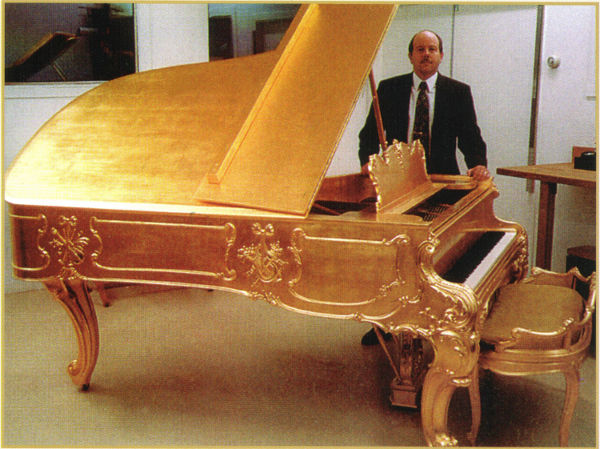
Excerpts from Piano Technicians Journal
September issue 2000
By Glen Hart
Recently I had the privilege of restoring a 1903 Steinway, model B (7 feet), art case grand piano. I trained in New York City and gild under the name “Hart of Gold” in Grand Junction, Colorado. The owner of the piano contacted Steinway and Sons and was referred to me for restoration of the cabinet.
The methods I used on great works of art throughout history requires the water gilding method. The process of water gilding is an art that takes many years to learn and perfect. Recipes of the old masters were carefully guarded secrets and the beauty of these traditional recipes is that they are fully restorable.
An object that is oil gilt is difficult to look at. It has no depth, no dimension. The eye is not directed anywhere and has nowhere to focus.
Burnished water gilding, on the other hand, is alive with light. At one angle the gold appears white while at another is black. As you walk around it the surface “crawls” with light and it never appears the same twice. One look at it for years and still be inspired. With the proper combination of burnish and matte finishes, a good gilder can direct the eye of the viewer where he wants it. The object takes on depth, dimension and beauty, which is achieved in no other way. These nuances are not self evident to the untrained eye and ofter the observer has no idea why he prefers one work over another.
Approximately 6,500 full of sheets of gold, cut into 60,000 individual pieces, were laid on the piano and the process took 16 months to complete.

